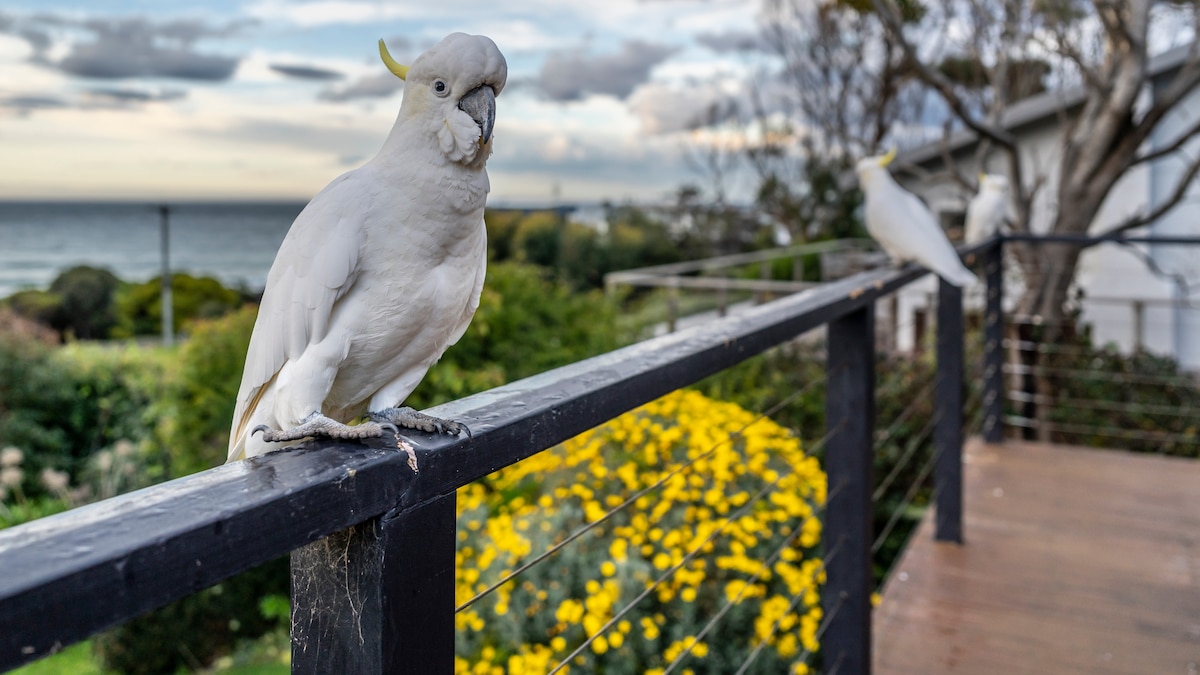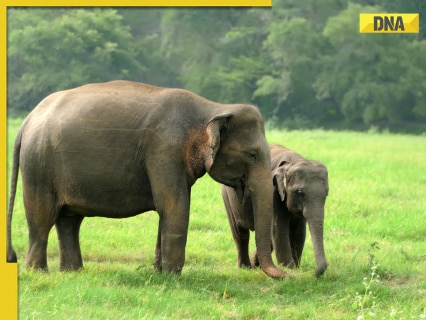Now Reading: A clever cockatoo picked up a human skill—and then it spread
-
01
A clever cockatoo picked up a human skill—and then it spread
A clever cockatoo picked up a human skill—and then it spread

Australia’s sulphur-crested cockatoos are bringing a new meaning to the term “bird-brained,” one innovation at a time. A few years ago, it was opening garbage bins to find food, a practice birds across dozens of neighborhoods eventually adopted. But now, the social birds are lining up, waiting their turns, and drinking straight from water fountains in a Sydney park. And, according to researchers, it’s just the latest evidence of cockatoo “culture.”
“These birds, they constantly surprise me,” says Barbara Klump, a behavioral ecologist at the Max Planck Institute of Animal Behavior in Germany and lead author on a study of the new behavior in this week’s Biology Letters.
The feat may sound simple to a human. After all, even preschoolers can master water fountains. But these particular fountains require fine motor skills. Picture a tall pipe with a round knob and a rubber spout on top. For water to emerge from the top of the bubbler, the knob must be turned and have continuous pressure. For two-foot-tall birds with no thumbs, that means a complicated dance involving talons, bills, and shifting weight.
“Imagine that you don’t have fingers and that you have a foot and a beak,” says Louis Lefebvre, an emeritus professor of biology and avian researcher at McGill University in Montreal. “Whenever we talk about tool use in birds, we have to remember how improperly attired they are towards this kind of behavior, how clumsy they are. So it’s all the more amazing when birds can do these complicated things.”
Clever cockatoos vs. water fountains
That’s why, even though Klump has studied innovations in these cockatoos for years, she took note when she saw a line of the birds waiting their turn on a chain-link fence, hopping onto the fountain, and twisting the knob. After over a month of observation, the team found that only about 40 percent of the birds that tried to use the fountain were successful, but many more had attempted to—around 70 percent of all the birds they tracked.
This is compared to just 32 percent of observed cockatoos attempting to open trash bins in Klump’s 2021 study—the first evidence that parrots could learn from each other’s behavior. In that case, the behavior spread to new neighborhoods, from just three suburbs to 44 across southern Sydney. (Read more about the cockatoos’ trash behavior.)
But here, there was no significant spread of the behavior during the study, suggesting the birds had already learned from their pecking peers by the time Klump’s team started observing them. The researchers can’t be certain how the behavior began, but the birds may have picked up the knowledge that water could be obtained from the fountain from watching humans or other curious cockatoos.
Sulphur-crested cockatoos aren’t the first species that has shown the ability to learn from each other, a phenomenon called social learning once thought to be exclusive to humans. They aren’t even the first birds to come up with novel approaches to access water. In California’s Death Valley, for example, a raven was observed turning on a water faucet, and in Ghana pied crows turned condensed water on air conditioner units into a drinking source.
The connection between these adept avians lies in their bird brains. “A cockatoo has more neurons per cubic millimeter in the equivalent of its cortex than many monkeys,” Lefebvre says. From chimpanzees to crows, animals that can innovate tend to have more neurons. Some have argued that such innovations and social learning constitute a form of culture.
(Palm cockatoos use tools to make sweet, sweet music.)
The benefits of being a brainiac
Although cockatoos regularly interact with members of neighboring roosts, a key way for behaviors to spread, so far, it seems that other roosts haven’t yet learned from these bubbler-loving birds. The researchers aren’t sure why, although it might be because many of the surrounding water fountains in Sydney don’t use the same mechanisms as the ones in the park.
Still, through citizen science reports, researchers have already heard of separate cockatoos using water fountains in other parts of the country over 500 miles away. “Just last week, somebody contacted me from Brisbane,” says Lucy Aplin, a cognitive ecologist at Australian National University and co-author of the study. “Reporting that in a park there, the birds have started to open the drinking fountains, and they’re of a different design as well.”
With Australian population numbers expected to increase by 12 percent over the next decade,
urban areas will likely grow, and adapting to these rapidly changing environments can do much more than provide a refreshing sip of water—it can save entire species. “Innovation provides resilience against threats that can lead to extinction,” Lefebvre says.
Whether city authorities and residents will respond to the birds’ drinking habits as they did in the so-called “battle of the bins” in 2021 remains to be seen, although there are no guarantees the cockatoos won’t find innovations to use new bird-proof water fountains. “These birds are very resilient, and they’re very adaptable,” Aplin says. “I’m prepared to be surprised.”























